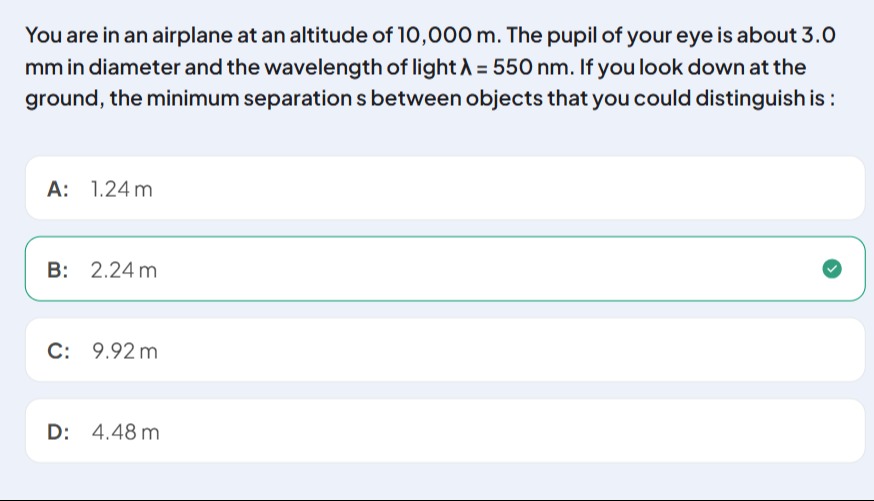Question
Question: You are in an airplane at an altitude of 10,000 m. The pupil of your eye is about 3.0 mm in diameter...
You are in an airplane at an altitude of 10,000 m. The pupil of your eye is about 3.0 mm in diameter and the wavelength of light λ = 550 nm. If you look down at the ground, the minimum separation s between objects that you could distinguish is :

1.24 m
2.24 m
9.92 m
4.48 m
2.24 m
Solution
The minimum separation s between two objects that can be distinguished is given by the formula based on the Rayleigh criterion for a circular aperture:
s=Rθ
where R is the distance to the objects (altitude of the airplane) and θ is the angular resolution of the eye. The angular resolution is given by:
θ=1.22dλ
where λ is the wavelength of light and d is the diameter of the aperture (pupil).
Given values:
- Altitude R=10,000 m
- Pupil diameter d=3.0 mm =3.0×10−3 m
- Wavelength λ=550 nm =550×10−9 m
First, calculate the angular resolution θ:
θ=1.22×3.0×10−3 m550×10−9 m
θ=1.22×3.0550×10−6 radians
Now, calculate the minimum separation s:
s=Rθ
s=10000 m×(1.22×3.0550×10−6) radians
s=104×1.22×3.0550×10−6 m
s=1.22×3.0550×104−6 m
s=1.22×3.0550×10−2 m
s=3001.22×550 m
s=300671 m
s≈2.2367 m
Rounding to two decimal places, the minimum separation is approximately 2.24 m.
